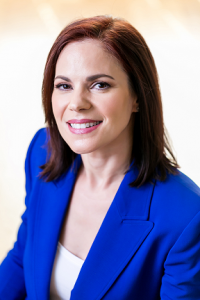Have you noticed that lately, you have the attention span of a goldfish? According to a study by Microsoft, the average human being now has an attention span of eight seconds (yes, goldfish are believed to have an attention span of 9 seconds)—a decrease from the average attention span of 12 seconds almost 20 years ago. More distressing is the fact that a newly recognized disorder called attention deficit trait (ADT) is reaching epidemic proportions in the workplace. Marked by agitation, distractibility and impatience, ADT prevents employees from making intelligent decisions, setting priorities and managing their time. The cause of these phenomena? Human beings are bombarded with too much information.
Information overload is a major problem for society today. The onslaught of new content being created and disseminated daily via the Internet is overwhelming. So much so that Mitchell Kapor, the founder of Lotus Development Corporation who designed the “killer application” Lotus 1-2-3, is famously quoted as saying that “getting information off the Internet is like taking a drink from a fire hydrant.” According to psychologist and attention expert Lucy Jo Palladino, Ph.D., author of Find Your Focus Zone: An Effective New Plan to Defeat Distraction and Overload, information overload can cause forgetfulness, fatigue and difficulty with focus. Not only that but some sources estimate that your brain makes up to 35,000 decisions a day, leading to mental fatigue. The increased stress and anxiety we feel from trying to process too much information in today’s hyper-connected world is undeniable.
With email and social media following us wherever we go, it’s more important than ever to let our brains take a break. According to Hortense le Gentil, author of the upcoming book Aligned: Connecting Your True Self with the Leader You’re Meant to Be, “Breaks allow you to check in with yourself and refuel. Checking in helps you align with yourself as you step back, get some distance, remind yourself of your ‘why,’ and examine whether your thoughts, your words and your actions are congruent.” Gentil offers three valuable tips to reclaim mental space in your daily life so you can make room for your intuition and stay connected with your aligned self.
Harness energy
What gives you energy? One of Gentil’s clients learned to take breathers between meetings, allowing herself to sit down for a bit and have a coffee on her way back to the office. Alternatively, perhaps listening to music for a few minutes works for you. Other options include stepping out of the office to walk and clear your head, talking to a friend, writing in a journal or reading a good book.
Practice mindfulness
An effective way to refuel and reclaim mental space is to suspend the past and future and stand in the present moment. This ability to bring yourself back to the present is known as mindfulness. Mindfulness and other forms of meditation have been scientifically proven to be among the most effective techniques to reclaim that headspace. This is why many tech firms in Silicon Valley often start meetings with a few minutes of silence. It gives everyone in the room a chance to clear their heads and focus. But like anything else, the ability to stand in the present at will is a skill that requires practice. Google started encouraging its staff to attend mindful meditation training as early as 2007, and the practice has now spread far beyond Silicon Valley to traditional Fortune 500 companies such as Goldman Sachs and General Mills.
Embrace meditation
Meditation has been shown to result in profound changes in brain structure over time, strengthening areas associated with emotional control, memory, introspection, attention and abstract thought. When your brain takes a break, it doesn’t stop working. Instead, it allows many mental processes to take place—just as essential physiological processes take place while you sleep. It makes space for the more intuitive part of your mind. Some of you may be sighing right now. “Meditation? Really?” But before you visualize yourself wearing a robe and burning incense, just know that mindfulness does not necessarily require you to sit in the lotus position for hours. It merely means to be present, fully aware of what you are doing—whether you are cooking, listening to music, walking or staring at the ceiling. All you need to do is focus on something other than your thoughts. It can be your breath or the sights or sounds around you.
Mindfulness techniques in action
One of Gentil’s clients cultivated mindfulness by going fishing, focusing on the sound of the wind rushing in the trees, the gentle ripple of the water and his fishing line flying through the air. Another chose to listen to music, focusing on each instrument and the variations in the vocalist’s voice. Steve Jobs was famous for doing much of his creative thinking while taking walks. Inventor Thomas Edison’s intuitive insights came to him when he was hovering between sleep and wakefulness. Albert Einstein and Salvador Dali also regularly wandered between sleep and full consciousness, a space where the linear and analytical part of their minds relaxed their grip, allowing intuition to flourish.
Research shows that even when we are relaxing or daydreaming, the brain does not really slow down or stop working. Cerebral downtime actually restores attention and motivation, encourages productivity and creativity and is essential to achieve our highest levels of performance. So next time you feel guilty for sitting around “doing nothing,” just remember that you’re doing something positive for your brain.
If you’ve been thinking about being your own boss for a while but aren’t sure if it’s the right time, download my free guide: 5 Signs It’s Time to Leave Your Soul-Sucking Job!


